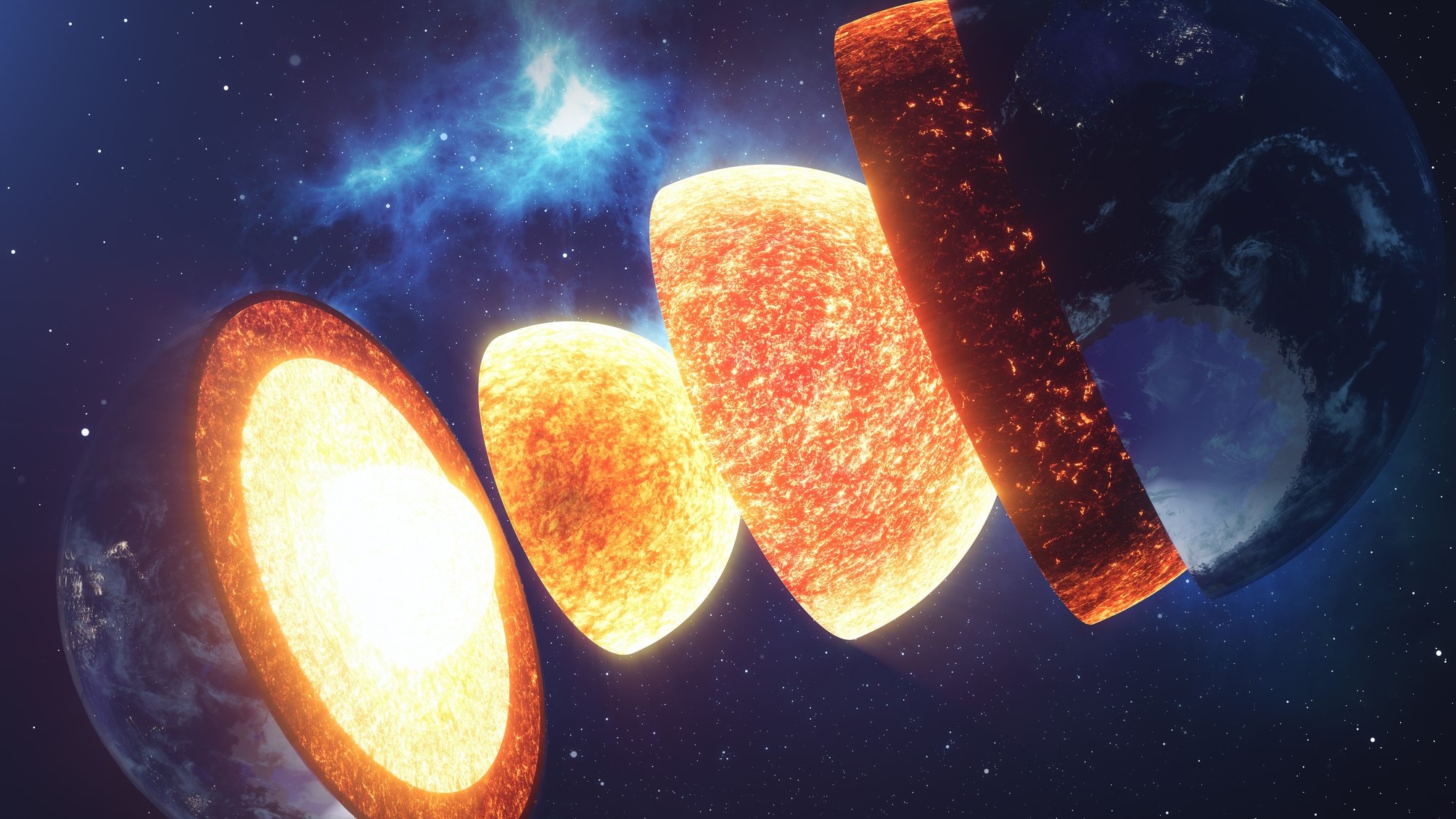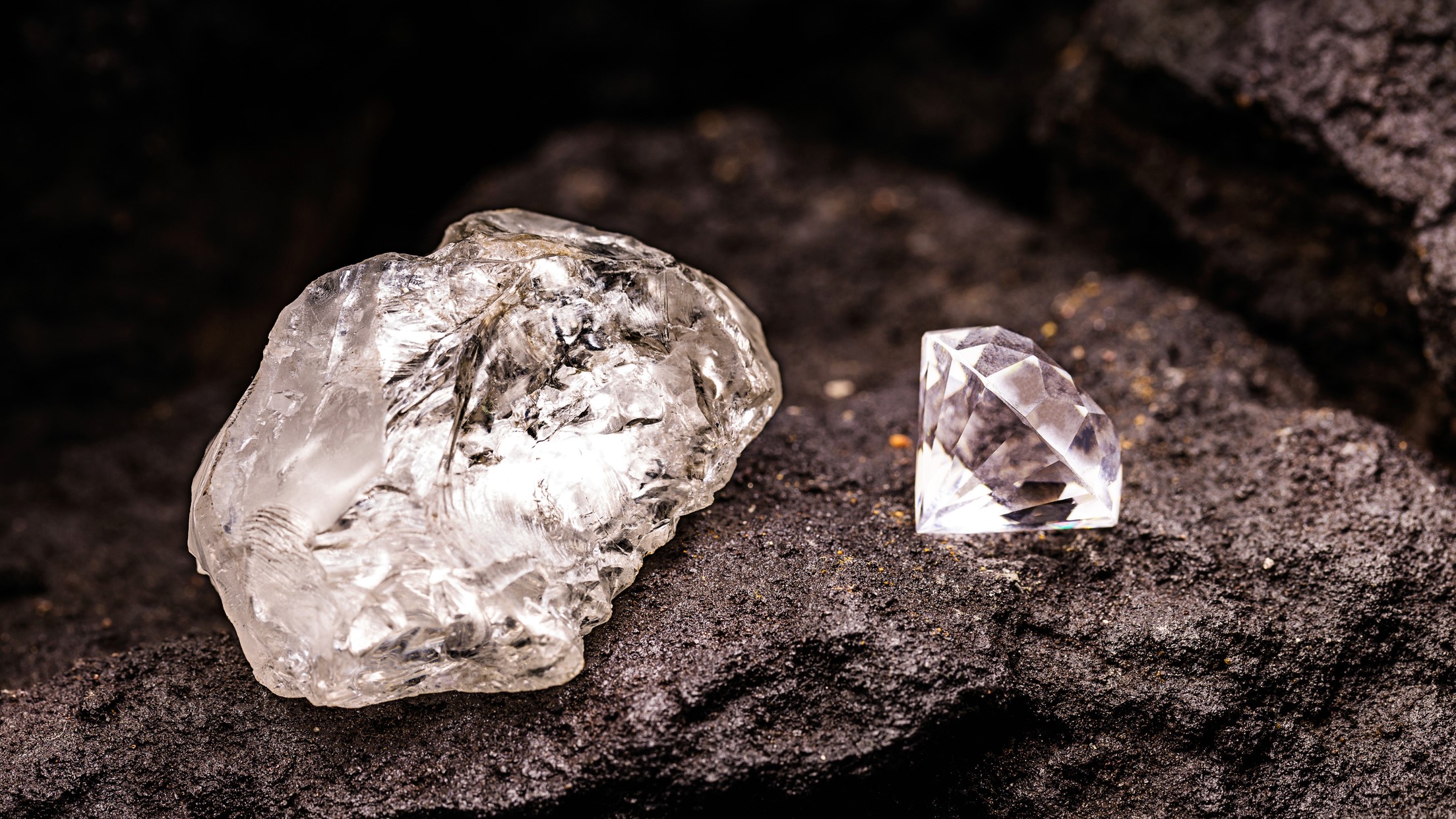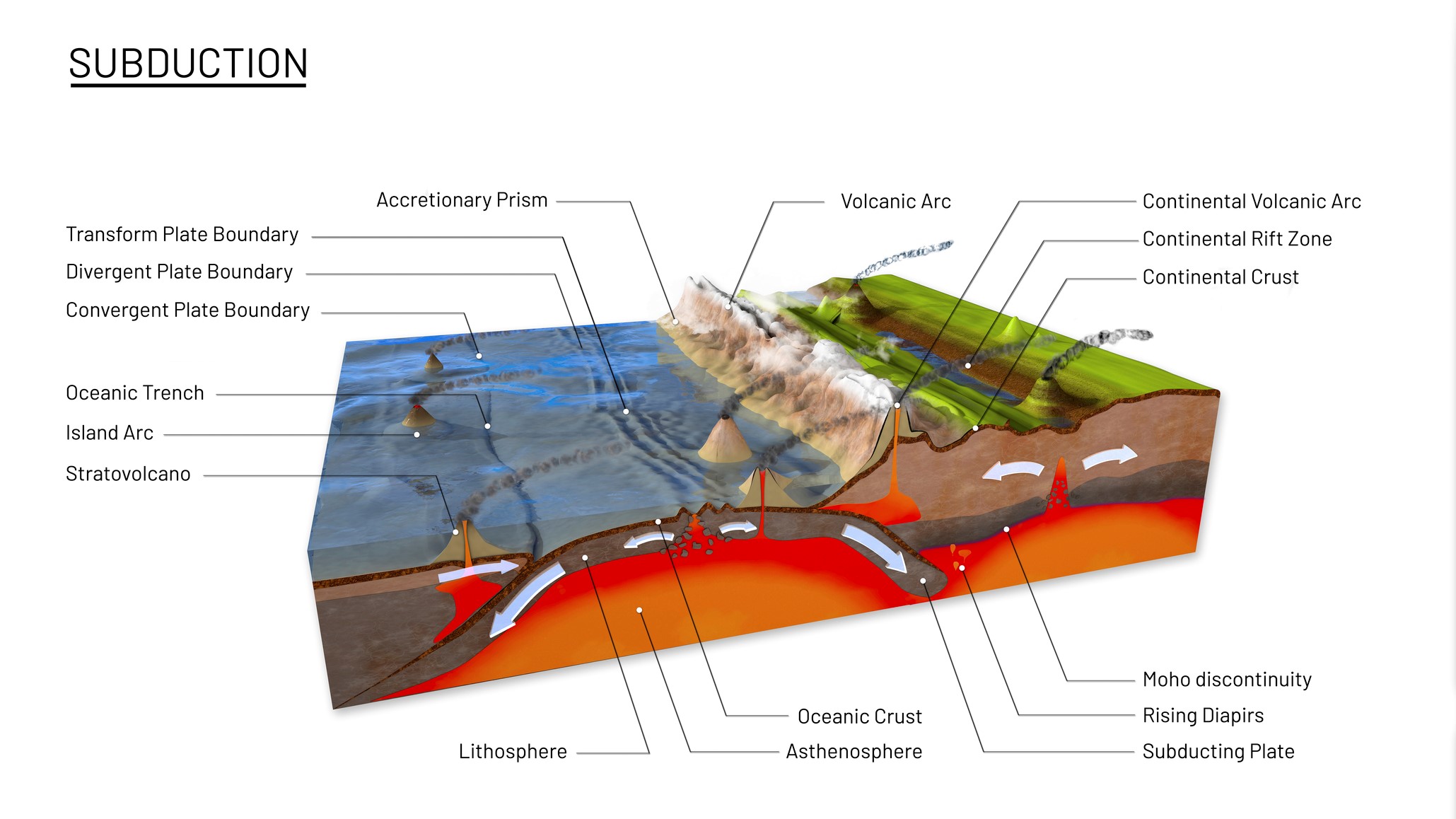Earth's layers: Exploring our planet inside and out
Peeling back each of Earth's layers reveals a lot about our planet's formation.

Earth's layers can be assigned according to chemical composition (what they're made of) or mechanical properties (rock strength and elasticity). Earth is made up of several layers.
Layers based on chemical composition are the core, mantle and crust. According to mechanical properties, Earth's layers are the lithosphere, asthenosphere, lower mantle (also known as mesospheric mantle), outer core and inner core, according to Phys.org.
We will explore each of Earth's layers in more detail as we journey from the center of the Earth out to the layer we call home.
Related: How did Earth form?
Inner core
At the center of Earth is a solid iron inner core. The hot dense core has a radius of about 759 miles (1,221 kilometers) and a pressure of about 3.6 million atmospheres (atm).
Temperatures in the inner core are about as hot as the surface of the sun (about 9,392 degrees F or 5,200 degrees C) — more than hot enough to melt iron — but the immense pressure from the rest of the planet keeps the inner core solid, according to National Geographic.
Radius: 759 miles (1,221 km)
Temperature: About 9,392 degrees Fahrenheit (5,200 degrees C)
Pressure: Nearly 3.6 million atmospheric pressure (atm)
State: Solid
Composition: Mostly iron and some nickel
The primary contributors to the inner core's heat are the decay of radioactive elements such as uranium, thorium and potassium in Earth's crust and mantle, residual heat from planetary formation, and heat emitted by the solidification of the outer core.
Earth's inner core rotates in the same direction as the surface of the planet but rotates ever so slightly faster, completing one extra rotation every 1,000 years or so.
Outer core
Earth's outer core is sandwiched between the inner core and the mantle. The boundary between the inner and outer core is known as the Lehman Seismic Discontinuity, according to Study.com.
The outer core is approximately 1,367 miles (2,200 km) thick and composed of liquid iron and nickel. Temperatures in the outer core are between 8,132 degrees F and 9,932 degrees F (4,500 degrees C and 5,500 degrees C).
Thickness: 1,400 miles (2,300 km)
Temperature: Between 8,132 degrees F and 9,932 degrees F (4,500 degrees C and 5,500 degrees C).
State: Fluid
Composition: Iron and nickel
Earth's interior is gradually cooling over time. As it cools, the liquid outer core crystallizes and becomes part of the solid inner core. Remarkably, the inner core "grows" by about 0.039 inches (one millimeter) every year, which equates to the solidification of 8,820 tons (8,000 tonnes) of molten iron every second according to an article published in The Conversation. The solidification of the outer core releases heat which drives convection currents in the outer core that helps to generate Earth's magnetic field.
The swirling motion of the outer core generates Earth's magnetic field in a process called geodynamo, according to NASA Earth Sciences. Magnetism inside Earth's core is approximately 50 times stronger than it is on the surface.
Eventually, the entire core will solidify and Earth's magnetic field will cease to exist. That will be bad news for our planet as the magnetic field protects us from harmful cosmic radiation. We still have a few billions of years of protection left though.
Mantle
The mantle is the largest and thickest layer of Earth, making up 84% of the planet's total volume, according to National Geographic. The mantle can be further divided into the upper and lower mantle (also known as the mesospheric mantle), with the upper mantle containing two distinct regions: the asthenosphere and the lower portion of the lithosphere.
Thickness: Approximately 1,800 miles (2,900 km)
Temperature: 6,692 degrees F to 1,832 degrees F (3,700 degrees C to 1,000 degrees C)
State: Solid
Composition: Magnesium, silicon and oxygen
The lower mantle refers to the layer between the outer core and asthenosphere. It makes up 55% of Earth by volume and experiences pressure from 237,000 atm to 1.3 million atm towards the outer core.
Heat and pressure in the lower mantle are much greater than in the upper mantle. The immense pressure keeps this layer solid despite the high temperatures capable of softening the rocks, according to National Geographic. Though geologists are yet to agree on a definitive structure of the lower mantle.
According to the Gemological Institute of America, diamonds are forged within the mantle approximately 93 to 124 miles (150 to 200 km) below the surface. They are brought to the surface by magma churned up from the depths due to tectonic processes such as plates splitting apart.

Asthenosphere
The asthenosphere is a 110 miles (180 km) thick layer of the upper mantle that sits between the lower mantle and the lithosphere, according to the U.S. Geological Survey (USGS). The term asthenosphere originates from the Greek "asthenes" meaning weak. The "weak" layer is denser and more "fluid" than the lithosphere above, and pressure and heat are so high that rocks in the asthenosphere flow extremely slowly with a highly viscous molten fudge-like consistency.
Temperature: 2,732 degrees F (1,500 degrees C)
Thickness: 110 miles (180 km)
Temperatures in the asthenosphere are around 2,732 degrees F (1,500 degrees C) according to the educational science site Earth How. Rocks in the asthenosphere are "on the verge" of melting, but due to the high pressure, they behave in a more ductile manner according to The Geological Society.
Lithosphere
The lithosphere is the outermost layer of Earth, composed of the crust and the brittle part of the upper mantle. The term lithosphere is derived from the Greek words "lithos," meaning stone, and "sphaira," meaning globe or ball.
Lithospheric temperatures vary from 32 degrees F (0 degrees C) at the crust to 932 degrees F (500 degrees C) at the upper mantle, according to the educational website Sciencing.com.
Depth: 5 to 20 miles (8 to 32 km)
Temperature: Range from 32 to 932 degrees F (0 to 500 degrees C).
Lithosphere is broken into large lithospheric (also known as tectonic) plates. Convection currents in the lower mantle and asthenosphere help to move the rigid lithospheric plates according to Earth How. The slow "floating" movement of the lithosphere on the asthenosphere drives plate tectonics and subsequent processes such as earthquakes, volcanic eruptions and the formation of mountains, according to National Geographic.
The lithosphere can be further divided into oceanic crust and continental crust. The boundary between the brittle part of the upper mantle and the crust (both oceanic and continental) is known as the Mohorovičić Discontinuity (Moho) according to Geology.com. The Moho depth varies from about 5 miles (8 km) below oceanic crust to 20 miles (32 km) below continental crust.

Oceanic crust and continental crust differ in their composition, density and age, according to World Atlas. Oceanic crust is primarily composed of dark basalt rocks rich in elements such as silicon and magnesium whereas continental crust is made of light-colored granite rocks containing oxygen and silicon. Oceanic crust is denser than continental crust and when two lithospheric plates — one oceanic and one continental — meet, the oceanic plate always subducts beneath the more buoyant continental plate, according to Sciencing.com.
The subduction of oceanic crust beneath continental crust continually "recycles" the oceanic rock back into the mantle below. This constant destruction is why oceanic rocks are rarely more than 200 million years old whereas continental rocks — which face far less adversity — can reach a ripe old age of 4 billion, according to Earth Observatory of Singapore.
Earth's layers FAQs answered by an expert
We asked Rebecca Fischer, assistant professor of Earth and Planetary Sciences at Harvard University a few commonly asked questions about Earth's layers.

Rebecca Fischer is an assistant professor of Earth and Planetary Sciences at Harvard University.
How many layers does Earth have?
The simplest way to divide up the Earth is into three layers. First, Earth has a thin, rocky crust that we live on at the surface. Then, underneath the crust is a very thick layer of solid rock called the mantle. Finally, at the center of the Earth is a metallic core. The crust, mantle, and core can all be subdivided into smaller layers; for example, the mantle consists of the upper mantle, transition zone, and lower mantle, while the core consists of the outer core and inner core, and all of these have even smaller layers within them.
Why is there a need to study Earth's layers?
We study the Earth's layers, the processes that occur within them, what they are made of, how they formed, etc. for a variety of reasons. We want to understand the crust since it's right beneath our feet, it controls a lot of processes at the Earth's surface that affect us. For example, volcanism and earthquakes originate in the crust and mantle; the Earth's magnetic field originates in the outer core, and it shields us from harmful radiation from space and makes our planet habitable. And if we understand better how these things work on the Earth, it will teach us something about how they might work on other rocky planets too.
Why does Earth have different layers?
The Earth's layers are caused by what the Earth is made of and how it formed. The core is made of metal (mostly iron), while the rest of the Earth is made of rock, and metal and rock don't mix (kind of like oil and water). So back when the Earth was first forming, the metal and rock separated, and the metal sank to the middle because it's heavier. The crust is made of different kinds of rocks than the mantle is. The crust is formed by volcanism, and it's made of lighter rocks than the mantle, so those rocks tend to stay at the surface and form a separate layer there after they erupt. The subdivisions within the crust, mantle, and core are often due to phase transitions; for example, the outer core is a liquid while the inner core is a solid, and the layers within the mantle are made of different combinations of minerals that have their atoms arranged in different ways, giving them different properties.
Do other planets have the same kinds of layers as the Earth?
We think that the other rocky planets (Mercury, Venus, Mars), our moon, and some of the other larger moons in our solar system have broadly similar layers to the Earth: rocky crust, rocky mantle, and metallic core. In detail, these layers look a bit different (for example, having different thicknesses, and different sub-layers within them) due to these bodies being made of slightly different materials and being different sizes. The planets in the outer solar system (Jupiter, Saturn, Uranus, Neptune) also have layers within them, but they are quite different, both because these are much bigger planets and because they are made of different materials (for example, they contain a large amount of water/ice, gases like hydrogen and helium, etc.).
How do we know Earth's layers are there?
Seismic waves can tell us a lot about Earth's interior, including where the lithosphere and asthenosphere are located.
During an earthquake, primary (P) and secondary (S) waves spread out through the Earth's interior, according to Columbia University. Special stations situated around the world detect these waves and record their velocities as well as the direction of wave travel and whether they have been refracted (bent). Seismic waves travel faster through dense material like solid rocks and slow down in liquids.
Relative differences in arrival times of waves at several recording stations reveal their velocities and subsequently the density of the material they have traveled through, according to the University of California, Santa Barbara. S waves for example cannot travel through liquids and do not travel through Earth's outer core implying that this layer is liquid, according to the University of California, San Diego.
Additional resources
Explore the mineralogy of Earth and its core in more detail with this informative resource from the University of Arizona. Dive further into Earth's layers with Oregon State University. Take a journey to the center of the Earth with this YouTube video from Bright Side.
Bibliography
McDonough, William F., and S-S. Sun. "The composition of the Earth." Chemical geology 120.3-4 (1995): 223-253.
Helffrich, George R., and Bernard J. Wood. "The Earth's mantle." Nature 412.6846 (2001): 501-507.
Artemieva, Irina. Lithosphere: an interdisciplinary approach. Cambridge University Press, 2011.
Fischer, Karen M., et al. "The lithosphere-asthenosphere boundary." Annual Review of Earth and Planetary Sciences 38 (2010): 551-575.
Join our Space Forums to keep talking space on the latest missions, night sky and more! And if you have a news tip, correction or comment, let us know at: community@space.com.
Get the Space.com Newsletter
Breaking space news, the latest updates on rocket launches, skywatching events and more!

Daisy Dobrijevic joined Space.com in February 2022 having previously worked for our sister publication All About Space magazine as a staff writer. Before joining us, Daisy completed an editorial internship with the BBC Sky at Night Magazine and worked at the National Space Centre in Leicester, U.K., where she enjoyed communicating space science to the public. In 2021, Daisy completed a PhD in plant physiology and also holds a Master's in Environmental Science, she is currently based in Nottingham, U.K. Daisy is passionate about all things space, with a penchant for solar activity and space weather. She has a strong interest in astrotourism and loves nothing more than a good northern lights chase!










